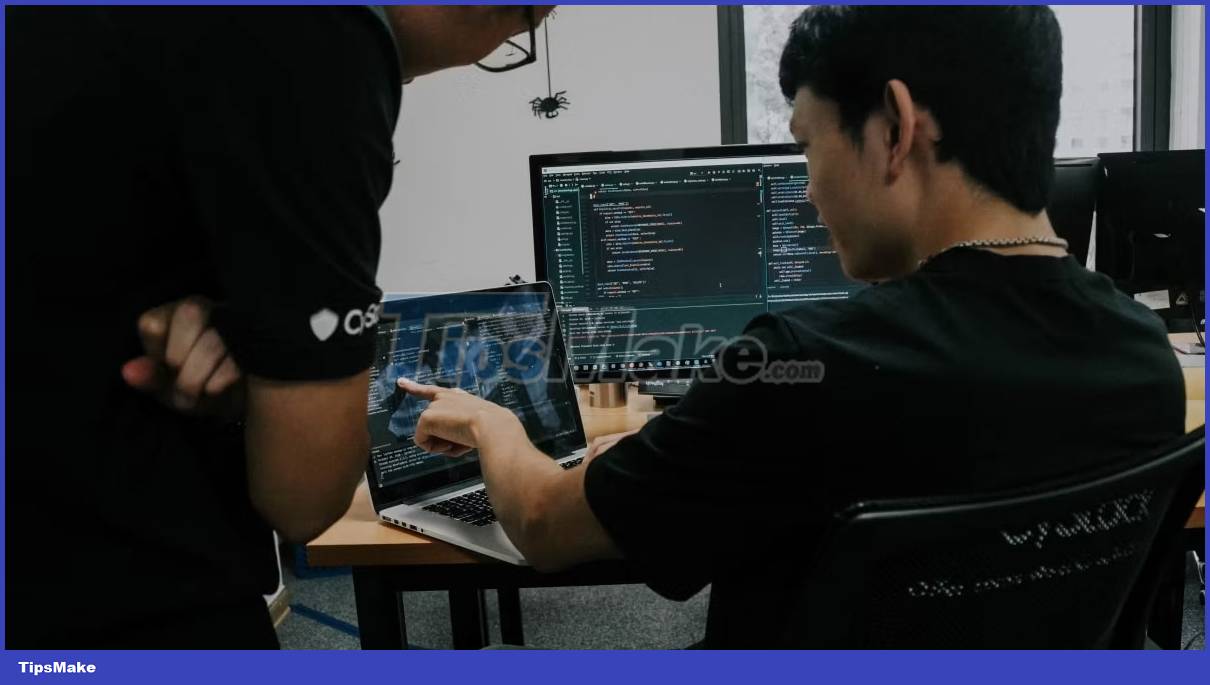What is SIEM? How can SIEM be used to optimize security?
Cybersecurity experts and defense teams have developed a variety of tools and methods for organizations to respond more efficiently and quickly to these threats. One of these tools is SIEM - Security Information and Event Management.
So what is SIEM? Why is it important to optimize security?
What is SIEM?
Businesses rely heavily on digital systems. With all the sensitive information and the growing number of cyber threats, keeping those systems secure is a big deal. That's where SIEM comes into play. It's like a super-intelligent security software that keeps track of everything going on in a company's digital setup: users, servers, network devices, and even those trusted firewalls.
What it does is pretty amazing. It gathers all the event logs and data generated by these different components. It then analyzes all this data, looking for any signs of trouble - suspicious activities, potential breaches, or anything that seems out of the ordinary. The biggest advantage is that SIEM does all of this in real time.
What is the difference between SIM and SEM?
You may have heard people talk about SIM or SEM.
SIM, which stands for Security Information Management, is the collection and management of logs for storage, compliance, and analysis. It is like the librarian of the secure world, carefully organizing all the diaries in a neat and accessible way.
On the other hand, SEM (Security Event Management) is an alert system. It guards against any immediate threat, increases alerts, and detects potential dangers in real time. It's a security guard who always keeps an eye on what's going on in a busy place.
SIEM has become an umbrella term for everything from event management and analysis to taking action against security issues and generating reports. It is the superhero of the digital security world, bringing all these elements together to create a powerful line of defense against cyber threats.
How does SIEM work?

Did you know that in the bustling city, there are countless cameras recording every corner, monitoring all activities? Think of SIEM as the man behind those cameras, but in the digital world. The ultimate data collector, SIEM engages to collect event logs and data from all these disparate sources: Users, servers, network devices, applications, and even security firewalls Secret is always on guard.
All these diaries, like puzzle pieces, are gathered together in one large digital hub. This is the heart of the operation, where all the logs from various places are sorted, identified and classified, ensuring that all these logs are put in their right place to understand everything. something clearer.
These logs record everything that happens. From successful login attempts to sneaky malware activities, everything is logged. It's a secret notebook that records all events, error messages, and warning signs.
What's really interesting is that SIEM is more than just a digital note-taking tool. It can detect unusual patterns, flag red flags on failed logins, and even sense the presence of malware. SIEM takes all these scattered logs, organizes them into a meaningful story, and helps you monitor the digital environment like a true guardian.
What is cloud SIEM?
Cloud SIEM, also known as SIEM as a Service, provides a comprehensive solution for managing security information and event data in a cloud-based environment. This approach brings security management to a single cloud-based platform. Cloud-based SIEM solutions provide IT and security teams with the flexibility and functionality needed to manage threats across a variety of environments, including on-premises deployments and cloud infrastructures. cloud.
Enterprises can leverage cloud SIEM technology to enhance visibility into distributed workloads. This technology enables them to effectively monitor and manage security threats across a wide variety of assets, including servers, devices, infrastructure components, and users connected to the network. By presenting all of this through a unified cloud-based dashboard, cloud SIEM helps to better understand and manage the cybersecurity landscape. This centralized approach means that organizations can track and address potential risks across different installations.
Why is SIEM necessary?
SIEM products make a significant contribution to companies' security strategies, delivering a multitude of benefits.
- Early threat detection : SIEM products monitor real-time events and threats across your network, making them easier to detect. This allows companies to identify vulnerabilities faster and take appropriate measures to reduce security risks.
- Improve efficiency : SIEM products allow administrators to monitor all security events in a centralized system. This improves efficiency in network security management and enables faster response to incidents.
- Cost reduction : SIEM products unify the detection, management, and reporting of security events in a centralized system. This reduces the need to use multiple security tools, resulting in cost savings.
- Compliance : Many industries require companies to adhere to specific security standards. SIEM assists in monitoring compliance with these standards and assists in the preparation of compliance reports.
- Analysis and reporting : SIEM products conduct in-depth analysis of security events and provide detailed reports to managers. This means that companies can better understand security vulnerabilities and take appropriate measures to reduce risks.
These benefits underline how important SIEM products are to companies and underline the important role they play in shaping security strategies.
How to detect problems in SIEM

SIEM products collect security events from various sources in your network, such as firewalls, gateways, servers, and databases. These events are recorded in a centralized database in formats convenient for analysis by the SIEM system. They establish rules for determining security events, designed to recognize specific conditions that indicate an event. For example, a set of rules can detect an event when a user accesses multiple devices simultaneously or enters incorrect credentials.
SIEM products then analyze the collected data and apply established rules to distinguish security events that occur in your network. SIEM identifies potentially harmful events and assigns their importance. At this stage, human intervention may also be required to determine if an event poses a real threat.
When a problem is detected, an alarm alerts relevant personnel. This allows security managers to react quickly to security incidents.
SIEM presents security events in detailed reports for administrators to better understand the security state of the network. These reports can be used to identify vulnerabilities, analyze risks, and monitor compliance.
These steps outline the basic process that SIEM systems use to detect events. However, each SIEM product can adopt a unique approach, and its configurable structure allows it to be tailored to specific requirements.
Who should use SIEM software?
SIEM software has relevance in a wide range of organizations. Sectors include finance, healthcare, government, e-commerce, energy and telecommunications, i.e. wherever a lot of sensitive data and financial information is processed.
In essence, nearly every sector and company, regardless of nature, can benefit from implementing SIEM software. This technology serves as an important tool in identifying network and system vulnerabilities, mitigating potential threats, and maintaining data integrity.
You should read it
- The 3 most popular attacks targeting clouds today
- Google Titan security lock is now available for G Suite users
- Cloud computing transforms how to prevent viruses?
- Cloud computing can develop in a relatively different direction in the next few years
- How to use AnyTrans for Cloud to manage cloud services
- Kaspersky Security Cloud guide to install Kaspersky Security Cloud for free
- Going to the cloud: The inevitable path of transforming numbers 4.0
- Detect a critical flaw in VMware Cloud Director, which could pave the way for hackers to take control of enterprise servers
May be interested
- How to enable security shortcuts on Xiaomi phones
 on xiaomi phones, there is a security application with tools to optimize the system faster and better such as optimizing battery, performance, cleaning data, ...
on xiaomi phones, there is a security application with tools to optimize the system faster and better such as optimizing battery, performance, cleaning data, ... - How to Optimize Google Chrome for Super Fast Startup
 we've all been there: clicking the chrome icon, then waiting for the browser to launch. the seemingly endless wait for the home page to load can be frustrating.
we've all been there: clicking the chrome icon, then waiting for the browser to launch. the seemingly endless wait for the home page to load can be frustrating. - Kaspersky Cleaner - Software to clean, remove junk files, optimize the best operating system
 kaspersky cleaner is a software to clean and protect your computer privacy, it will help clean junk files and temporary files to optimize and improve the security of your computer system.
kaspersky cleaner is a software to clean and protect your computer privacy, it will help clean junk files and temporary files to optimize and improve the security of your computer system. - Tips to optimize iPhone performance completely automatically
 a simple trick to boost performance and security is to restart your iphone.
a simple trick to boost performance and security is to restart your iphone. - Optimize Windows 10 for maximum performance when operating
 after a long time of using, you will definitely feel that windows 10 is not working as fast as before. tipsmake.com will guide you some tips to optimize windows 10 to operate with the highest performance.
after a long time of using, you will definitely feel that windows 10 is not working as fast as before. tipsmake.com will guide you some tips to optimize windows 10 to operate with the highest performance. - How to optimize content for mobile websites
 in order for your website to be fully mobile optimized, you need to change both the web design and the content displayed on the web.
in order for your website to be fully mobile optimized, you need to change both the web design and the content displayed on the web. - How to monitor, clean and optimize Linux with Stacer
 looking for ways to optimize your linux system and make it run faster? there are tons of ways and tools for you to do this, and stacer includes everything you need to monitor, clean, and optimize your linux installation.
looking for ways to optimize your linux system and make it run faster? there are tons of ways and tools for you to do this, and stacer includes everything you need to monitor, clean, and optimize your linux installation. - Maintain & optimize the operating system with PC Reviver
 pc reviver is a software that helps maintain and optimize windows most effectively, with an intuitive, easy-to-use interface. in addition to providing custom maintenance and optimization of windows, pc reviver also displays information about the windows version and configuration.
pc reviver is a software that helps maintain and optimize windows most effectively, with an intuitive, easy-to-use interface. in addition to providing custom maintenance and optimization of windows, pc reviver also displays information about the windows version and configuration. - How to optimize Windows 11 PC graphics and performance in seconds very simply
 this article will guide you on how to optimize windows 11 to make your computer run smoother.
this article will guide you on how to optimize windows 11 to make your computer run smoother. - What is XMP? Enable XMP on BIOS/UEFI to optimize RAM
 what is the xmp feature on the computer? learn about the concept of xmp. how to enable xmp in bios or uefi to optimize ram speed, increase ram speed to the highest
what is the xmp feature on the computer? learn about the concept of xmp. how to enable xmp in bios or uefi to optimize ram speed, increase ram speed to the highest










 What is Hemingway? Tips for productivity using iceberg theory
What is Hemingway? Tips for productivity using iceberg theory What are XLX files?
What are XLX files? What is Creative Fabrica? Is it worth it for graphic designers to use?
What is Creative Fabrica? Is it worth it for graphic designers to use? What is the maximum Ethernet cable length to not lose signal?
What is the maximum Ethernet cable length to not lose signal? What is a BBS file?
What is a BBS file? Why are train wheels more like a cone than a regular circle?
Why are train wheels more like a cone than a regular circle?